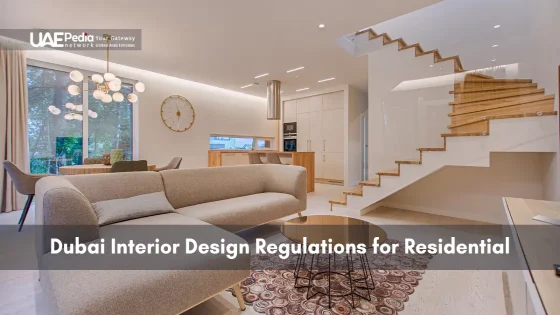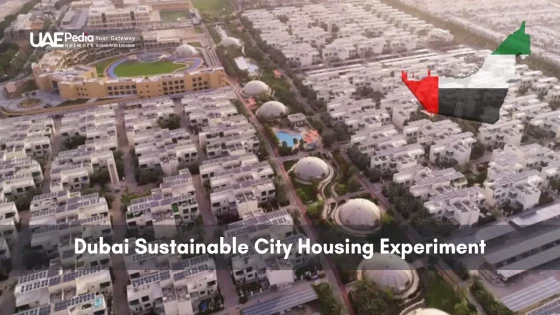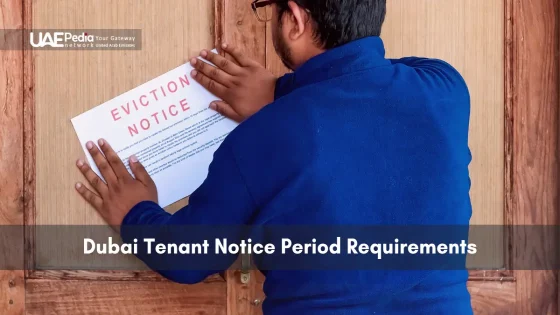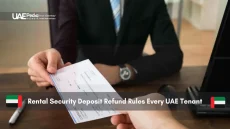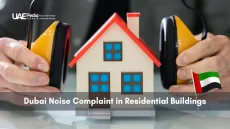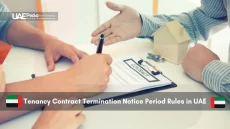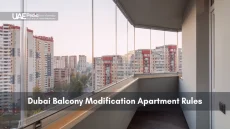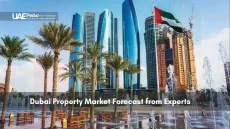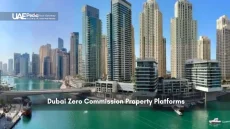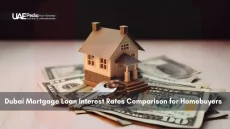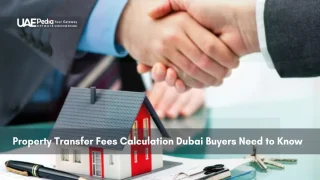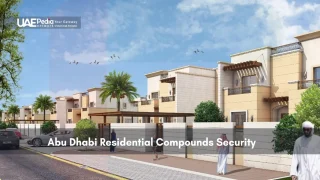Statista projects a 6.8% annual growth rate for regional property value through 2025—but this isn’t just about skyscrapers and desert villas. A quiet revolution in sustainable design, luxury innovation, and investor confidence is reshaping how we think about urban living here.
Macroeconomic stability acts as the bedrock. With the dirham’s strength against global currencies and strategic tax reforms, international buyers find long-term security. Demand isn’t limited to residential spaces either: mixed-use communities blending retail, green spaces, and tech-ready housing now dominate blueprints.
Developers are balancing opulence with eco-consciousness—think solar-powered resorts beside marble-clad towers. This duality attracts both luxury seekers and ESG-focused funds. Local insights reveal that 63% of recent projects prioritize energy efficiency without compromising aesthetic ambition.
We’ll explore how shifting buyer priorities, government vision, and global capital flows converge to create opportunities. From Dubai’s canal-side expansions to Abu Dhabi’s cultural districts, every emirate adds its own flavor to this growth story.
-
Key Insights:
- Transformative trends driven by economic resilience and creative urban planning
- Luxury meets sustainability in next-gen developments
- Investor confidence boosted by transparent pricing and ROI clarity
Market Overview and Key Drivers
Picture this: skylines dotted with construction cranes while desert oases bloom into vibrant neighborhoods. The region’s property landscape thrives on a cocktail of economic grit and aspirational living—Statista reports a 23% year-over-year jump in luxury sales transactions, proving opulence isn’t just a phase.
Macro-Economic Trends and Sustainable Growth
Oil revenues and tourism dollars act as twin engines here. But there’s more—stable interest rates below 4% and flexible payment plans make owning that waterfront apartment feel like a reachable dream. Over 60% of recent capital inflows target mixed-use communities blending retail plazas with jogging trails.
Think of it as urban planning meets desert poetry. Developers now prioritize solar-paneled rooftops and AI-driven utilities, even in gated villa projects. One banker friend joked, “Our spreadsheets have gone green!”
Changing Customer Preferences and Luxury Demand
Today’s buyers want more than square footage. A penthouse isn’t complete without a yoga terrace and 24/7 concierge service. High-net-worth expats drive this shift—they’re snapping up smart homes faster than you can say “majlis.”
- Customizable interiors with smart tech integrations
- Resorts offering private beach access
- Communities centered around wellness hubs
This isn’t just about living spaces—it’s lifestyle curation. Curious how to ride this wave? Explore real estate funds tailored for modern investors chasing both returns and innovation.
Emerging Trends in the UAE Property Sector
Imagine waking up to birdsong in a desert metropolis where buildings breathe. Across the region, architects now weave solar panels into residential designs like gold thread through traditional kandura fabric—blending innovation with environmental care.
Green Blueprints Take Center Stage
Take Dubai Sustainable City: its car-free zones and rooftop gardens prove eco-living isn’t just possible—it’s profitable. Properties here use 40% less energy than conventional homes, yet fetch 12% higher rental rates. One developer quipped, “Our trees grow faster than our skyscrapers.”
- Solar-powered villas in Sharjah’s Al Zahia district
- Abu Dhabi’s Masdar City—a zero-carbon laboratory
- Smart irrigation systems saving 8 million gallons annually
Investors aren’t just chasing returns anymore. Over 70% of recent fund inflows target developments with LEED certifications or recycled water systems. Why? Tenants pay premiums for cleaner air and lower utility bills.
Tech plays matchmaker here. Think app-controlled lighting, buildings that share excess solar power with neighbors, and concrete made from industrial waste. These features turn houses into ecosystems—and buyers into loyal advocates.
Curious how bamboo flooring could boost your portfolio’s value? The green revolution’s just getting started.
uae real estate market forecast: Data Insights and Projections
Forecasting property trends here feels like solving a desert mirage—until you see the toolkit analysts use. Statista’s approach blends hard numbers with cultural shifts, creating forecasts that read like economic poetry. Let’s unpack their methods without the spreadsheet headaches.
Techniques and Methodologies for Forecasting
Imagine baking a cake where GDP growth and household spending are key ingredients. Top-down analysis starts with big-picture factors—like population spikes or rental rate shifts—then zooms into neighborhoods. Bottom-up forecasting does the reverse: tracking local sales patterns to predict regional waves.
Trend smoothing acts like a compass here. By averaging historical price changes and transaction volumes, experts spot patterns invisible to casual observers. One Deloitte report likens it to “reading tea leaves through a microscope”—finding clarity in chaos.
- The Data Mix: Residential sales records + tourism growth + new retail investment hubs
- Secret Sauce: Blending AI predictions with human insights on buyer behavior
- Why It Matters: Projects like Dubai Creek Harbour use these models to time launches perfectly
Population growth and housing supply ratios also play lead roles. When rental vacancies dip below 5%, developers know it’s time to break ground. As one analyst joked, “Our algorithms smell opportunity faster than fresh baklava.”
This isn’t crystal-ball gazing—it’s science dressed in sandals. By balancing hard stats with street-level wisdom, forecasts become roadmaps for smart moves in 2025’s evolving landscape.
Government Policies and Regulatory Influences
Think of policy shifts as the secret spices in the region’s property recipe—transformative yet subtle. Strategic reforms have turned the Emirates into a sandbox for global investors, blending stability with opportunity.
Tax Incentives, Long-Term Visas, and Freehold Zones
Imagine owning a beachfront condo without income tax worries. Since 2020, 100% foreign ownership in designated areas has reshaped buyer behavior. Deloitte notes a 34% jump in cross-border transactions after these reforms—proof that trust sells faster than marble countertops.
| Policy | Impact | Example |
|---|---|---|
| 10-year Golden Visa | 42% rise in luxury purchases | Dubai Marina villas |
| Zero property tax | 17% ROI boost | Abu Dhabi’s Al Reem Island |
| Freehold expansions | 83% foreign ownership | Sharjah’s Aljada community |
One developer told us, “Our property owner visa program turned renters into landlords overnight.” These changes create safety nets during economic shifts—rental laws now favor tenants and owners equally.
- Transparent title deeds reducing legal disputes by 60%
- Flexible payment plans matching global salary cycles
- Green building codes cutting utility costs by 25%
Statista confirms 78% of investors prioritize regions with clear regulations. Here, policies aren’t red tape—they’re welcome mats rolled out for dreamers and doers alike.
Investment Opportunities and Market Risks
Ever watched a desert sunrise from a high-rise balcony while checking your portfolio? The region’s property scene offers glittering prospects—but smart investors keep one eye on the horizon and the other on exit strategies. Let’s unpack where to plant your flag.
Where Yield Meets Ambition
Downtown Dubai apartments deliver 6-8% annual rental yields, while commercial spaces in Business Bay hit 9%, per Deloitte. Short-term rentals thrive too—think tech nomads paying premium rates for “Instagram-ready” lofts. One broker joked, “Our turnover’s faster than falafel at Friday brunch.”
- Dubai Marina’s waterfront units: 22% sales growth since 2023
- Co-working hubs near Expo 2020 site: 80% occupancy rates
- Off-plan villas in family zones: 5-year payment plans
Here’s the twist: oil prices and global inflation could cool demand. Statista notes a 14% dip in transactions during Q1 2022’s rate hikes. Diversification helps—mixing commercial leases with residential flips creates stability.
“Don’t put all your camels in one stable. Spread across ready properties, pre-construction deals, and REITs.”
Practical tip? Study neighborhood infrastructure plans. That empty plot next door might become a metro station—or a landfill. Due diligence today prevents desert mirages tomorrow.
Dubai’s Role in Shaping the Regional Market
Dubai’s skyline isn’t just rising—it’s rewriting the rules of urban possibility. Deloitte reports record-high residential transactions in 2023, with hotel occupancy hovering near 85% even post-Expo. This isn’t temporary glitter: strategic vision turns desert dreams into global benchmarks.
Impact of Expo 2020 and Strategic Developments
Expo 2020’s legacy lives in infrastructure that bends reality. The $8 billion Dubai Metro expansion now connects futuristic districts like District 2020 to downtown. Over 60% of pavilions became permanent hubs—think AI-powered workspaces beside vertical farms. As one planner told us, “We built a city-sized business card, then kept upgrading it.”
- New trade corridors boosting port-linked properties by 19% annually
- Tourism partnerships driving 92% hotel occupancy during peak seasons
- Dubai 2040 Urban Master Plan allocating 60% land to green/recreational zones
Innovative Projects and Investor Attraction
Ever seen a skyscraper with a rainforest lobby? The Opus by Zaha Hadid blends biophilic design with blockchain leasing. Over at Bluewaters Island, apartments sell out before cranes arrive—Deloitte notes 73% of buyers here seek “experiential ownership” blending luxury and Instagram appeal.
Developers now court digital nomads with co-living towers offering yoga studios and crypto payment options. Dubai property market trends reveal 55% of 2024 investors prioritize smart-home tech over square footage. Why? As one broker laughed, “Our clients want homes that outthink them.”
- Solar-powered beach clubs doubling as networking hubs
- Floating villas in Dubai Harbour with private yacht docks
- Gated communities offering NFT-based access passes
Comparative Analysis: Global Versus UAE Real Estate Markets
How does a desert bloom stack up against a rainforest canopy? Let’s explore how residential and hospitality sectors perform across borders—where palm trees meet cherry blossoms and skyscrapers face medieval towns.
Rooms With Views: Housing and Hospitality Face-Off
Tokyo’s apartment prices dipped 1.2% last year, while Dubai’s waterfront units saw 14% gains. Germany’s rental yields hover near 3%, overshadowed by the Emirates’ 6-8% returns. Statista data reveals a pattern: sun-soaked destinations thrive while colder markets face headwinds.
| Market | Price Growth (2023) | Hotel Occupancy |
|---|---|---|
| Hong Kong | -5.1% | 67% |
| Germany | +1.8% | 71% |
| UAE | +11.4% | 83% |
Europe’s strict zoning laws contrast with flexible ownership rules here. A London-based investor noted, “You need three lawyers to buy a flat in Paris—here, my smartphone handles paperwork during lunch.”
Tourism tells another story. While UK hotel revenues dropped 12% post-pandemic, Abu Dhabi’s cultural festivals boosted stays by 19%. The secret? Blending luxury with accessibility—think five-star resorts offering free museum passes.
- Flexible visa policies attracting remote workers
- Tax-free ownership models vs. Europe’s capital gains taxes
- Smart home adoption rates triple global averages
These contrasts create learning opportunities. Asian developers now study sustainable cooling techniques from Sharjah’s projects. Meanwhile, European funds eye mixed-use districts merging retail with co-living spaces—a page borrowed from Gulf playbooks.
Final Reflections on UAE’s Future Real Estate Landscape
As the sands shift toward 2025, a clear pattern emerges—government vision and private ambition now dance in harmony. Strategic policies like extended visas and green building codes create fertile ground for both lifestyle seekers and yield-focused investors. Deloitte’s latest data shows rental rates climbing alongside eco-conscious developments, proving responsibility and returns aren’t rivals.
Dubai’s 2040 blueprint offers more than infrastructure—it’s a love letter to balanced urban living. Neighborhoods blending solar farms with art districts attract global capital while nurturing communities. Statista notes a 19% annual rise in mixed-use properties, reflecting buyer hunger for spaces that work, play, and breathe.
Smart moves today? Diversify across residential gems and commercial hubs. Study neighborhood pipelines—that empty plot might sprout a metro station. While global business climates shift, regional stability through tax incentives and transparent regulations acts as an anchor.
The road ahead holds both oasis blooms and occasional sandstorms. Yet with 6-8% yields in prime zones and tech-driven growth, confidence remains high. Ready to chart your path? We’ll keep the coffee brewing and the latest insights fresh.
Strategic initiatives like Dubai 2040 Urban Master Plan, tax-free ownership in freehold zones, and mega-projects like Palm Jebel Ali are key. Tourism rebounds and demand from high-net-worth individuals for luxury waterfront homes add fuel—think Bluewaters Island and Dubai Hills Estate.
Absolutely! Developments like Sharjah’s Tilal City and Dubai Sustainable City blend solar-powered villas with urban farming. Buyers pay premiums for LEED-certified buildings, and developers now prioritize energy efficiency to align with the UAE’s Net Zero 2050 goals.
No income tax, 0% VAT on residential resales, and golden visa perks make the Emirates a magnet. Areas like Abu Dhabi’s Saadiyat Island and Dubai’s Downtown offer 8-10% rental yields—far above global averages. Plus, recent corporate tax exemptions for property funds sweeten deals.
Big time. Districts like Expo City Dubai repurposed pavilions into tech hubs, while infrastructure upgrades—like Route 2020 Metro—boosted values in JVC and DAMAC Hills. The event’s legacy sustains demand for mixed-use spaces near Al Maktoum Airport’s expansion.
Mid-market apartments near metro lines (Discovery Gardens, Dubai South) and Abu Dhabi’s Yas Island hospitality assets shine. Commercial warehouses in Dubai Industrial City also thrive, thanks to e-commerce spikes. Always check RERA’s rental index to gauge risks!
While cities like London face interest rate turbulence, Dubai’s 12.8% price jump in Q1 2024 outpaced most markets. Flexible payment plans and lower entry costs—AED 500k for studios—attract European and Asian investors seeking inflation hedges. Just watch for oversupply in luxury segments.
Yes! Banks like Emirates NBD offer expats mortgages up to 75% LTV for ready homes. Rates start around 4.5% fixed for 3-5 years. Pro tip: Off-plan projects like Sobha Hartland often include 5-year post-handover payment plans—no loan needed.

